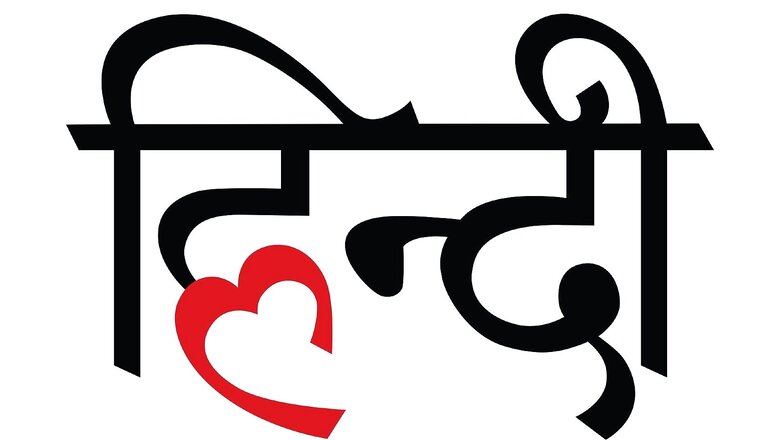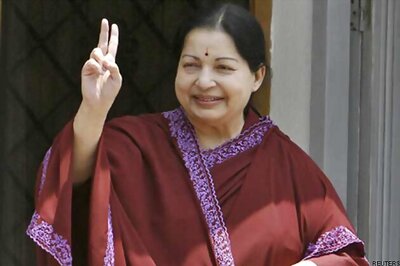
views
Language, specifically bridge language, has been a recurring irritant in India since Independence, and its days are, perhaps, even numbered. But its recurrence as a political issue compels one to wonder whether the issue is about language itself or a deliberate attempt to foment dissent and divide.
Language for “conducting business of the state” and language for “conducting social exchange between people” are different topics. The former is a functional necessity of a state, while the latter is about a tool for social exchange.
Our society has been a melting pot of languages serving us in culture and practice and there is no evidence of language being a cause of social conflict ever. People have traveled for study and trade forever. Great personalities like Adi Sankara and others equally peripatetic have crisscrossed this land and comprehension for them was never a problem. Perhaps, Sanskrit helped. But that apart it is unheard that two people fight just because they speak a different language. Their social exchange may include discomfort, bemusement, gestures, laughter, at worst exasperation. But never a fight.
Language row, on the other hand, is almost always in context of “conducting business of the state” and is more often political posturing than about language itself. Unlike medieval or colonial times, when governance could be either in the realm of oral instructions or via autocratic decree of colonial elite, a modern democratic state cannot afford distance between the governing and those governed. Communication is the bridge that allows a state to convey its business of legislation, governance, and administration to its citizens and one way to obstruct a state from conducting its normal business is to attack that bridge.
The issue of language for conducting business has been extensively debated and settled by the Constituent assembly in 1949 while discussing articles 343 to 351. The Official Languages Act, 1963, doesn’t mention a “national language”, but states that the Indian Union will conduct its business at center and in its states through a designated set of “official languages” as per provisos listed therein. The eighth schedule lists out 22 such languages. But even before the act was implemented, the States Reorganization Act, 1956, had laid the ground to create linguistic states. Jury is still out whether that was good idea at inception is indeed the root cause of all linguistic problems.
Intermittent flare-ups primarily happen because of erroneous cross referencing of “official language” with “national language” by some and not always with innocuous intent. The confusion helps them transition a purely functional matter into a potent emotional issue which is good fodder even to serve nonlinguistic political pursuits. This perhaps is the reason for reoccurrence of language conflict at coincidentally opportune electoral times.
Arriving at a standardized communication protocol is no mean task. World of technology offers a microcosmic example. For 75 years, programming languages have been on an evolutionary hyperdrive working toward digital convergence. But had a bunch of FORTRAN programmers picketed against those attempting COBOL who in turn had led an agitation against the “C” guys who then took to the street against the JAVASCRIPT and PYTHON chappies and we would be staring at a “Digital Apocalypse”! Thankfully, none of the kind happened.
Similarly, if precipitating governance apocalypse is not the intention, then language for conducting business of the state needs intelligent deliberation. There is no way a billion people will ever comprehend one single language. Even within regions different languages are not comprehended by everyone. Even English, the colonial remnant is spoken and understood by less than ten percent of our population.
What language should then the government use? We are not an autocracy like China that has a non-negotiable mandate to use Mandarin as its official language. Democracy has obvious shackles.
What that language should not be is a luxury of opinion and everyone in Bollywood and TikTok is entitled to one. But what it should be is subjected to tyranny of thought. While an ideal solution is impossible, it is the intent behind facilitating communication that should be put to scrutiny. If the government’s intent is honest then extreme patience, respect, zero confrontation and zero imposition should be exercised by all without giving any room to those searching for an opportunity to ratchet emotions.
In any case for those who have invested political capital in the language issue, disruption is around the corner. Technology and an increasingly converging world will soon render the language debate a non-issue.
Language translation is a thrust area for most tech majors. Much work is happening in Text to Speech (T2S), Speech to Speech (S2S) domains. IBM Mastor, Google Translate, Microsoft Translator and open-source technologies like Moses are at various stages of development. Encoder-decoder modules in multiple language permutations are being rapidly tested assisted by AI & ML. Before we know it, useful applications will aid the state. Government in-fact should proactively encourage innovations and technopreneurs in this domain.
While language for conducting business of the state will be aided by technology, language for social exchange will continue to evolve as it always has. To suit functional needs of a society.
Because at its core, language is first about functionality. Early humans communicated with gestures and grunts. But gestures are useful only at a physical level. Indicating hunger or pointing out direction is easy. Gestures may even work partially for conveying emotions. Like a hug when in love or a slap when angry. But gestures have limitations when it comes to intellect, a domain of infinite thoughts and ideas which when exchanged make up society. And this exchange needs a standardized functional code which is language. Emotion gets entangled later, but language keeps evolving to address a societies functional needs.
And evolution is continuous, unidirectional, and organic. Society as we know today, and some languages can be traced back to barely five hundred generations. An insignificant blip in the planet’s evolutionary timeline. Just in this period many languages have emerged, merged, morphed, extinguished, and survived. Cuneiform, Sanskrit, Tamil, Aramaic, Norse, Avestan, Latin, Greek, Slav, Sinitic, Mesoamerican and Afroasiatic languages all have gone through their evolutionary journey. Even in postmodern context languages like Flemish, Catalan, Guarani, or Quechua all are organically assimilating towards functionality. UNESCO estimates 230 languages went extinct between 1950 & 2010. So while we must nurture, enrich and care for our languages while in use, we must be accepting of their evolutionary objective to bridge humanity.
And those aiming at the bridge should perhaps consider that language is only one element of our composite culture. It is one structural element of a complex cultural bridge that makes up our society that has evolved over time. Language row may be a ripple of adjustment in that evolutionary process, but unlikely if it will impact the superstructure that is the bridge.
Vikram Limsay is a business strategist and socio-political commentator. He tweets as @vikramlimsay. Views expressed are personal.
Read all the Latest Opinions here


















Comments
0 comment